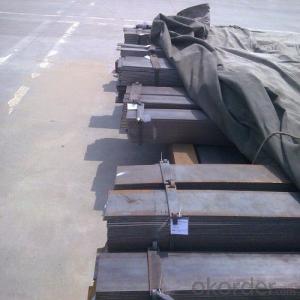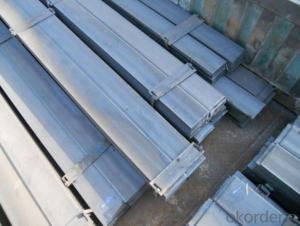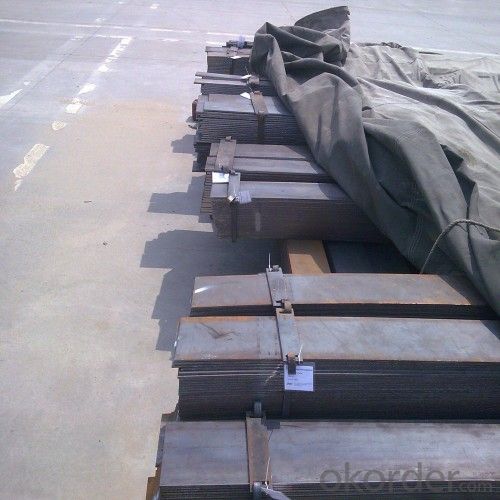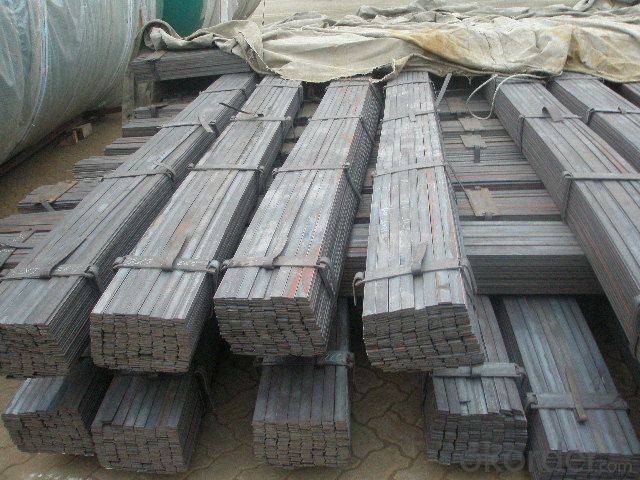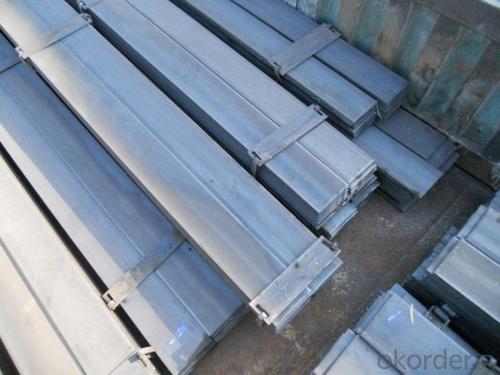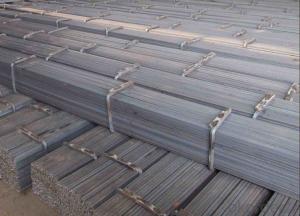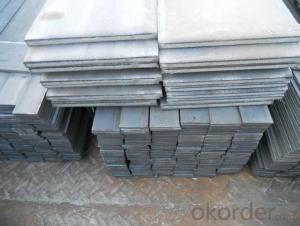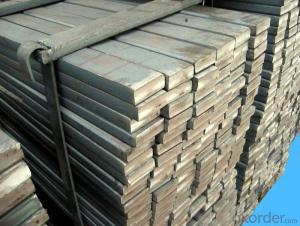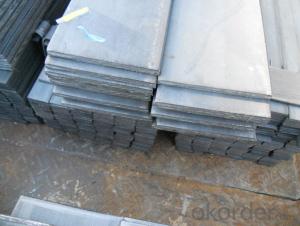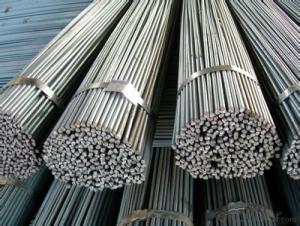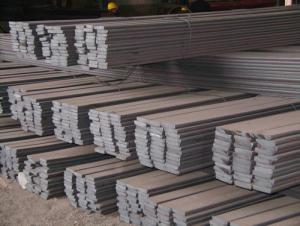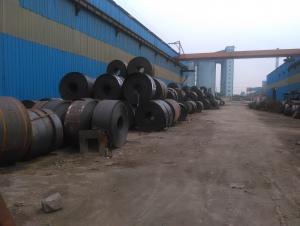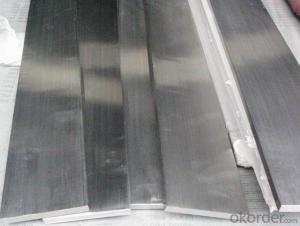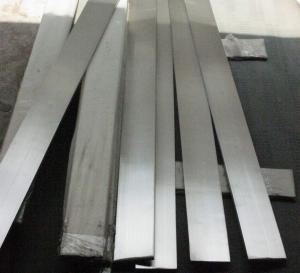Hot Rolled Steel Flat Bars in Material Grade Q235B
- Loading Port:
- Tianjin
- Payment Terms:
- TT OR LC
- Min Order Qty:
- 25 m.t.
- Supply Capability:
- 10000 m.t./month
OKorder Service Pledge
OKorder Financial Service
You Might Also Like
Product Description:
OKorder is offering high quality Hot Rolled Steel Flat bars at great prices with worldwide shipping. Our supplier is a world-class manufacturer of steel, with our products utilized the world over. OKorder annually supplies products to European, North American and Asian markets. We provide quotations within 24 hours of receiving an inquiry and guarantee competitive prices.
Product Applications:
Hot Rolled Steel Flat bars are ideal for structural applications and are widely used in the construction of buildings and bridges, and the manufacturing, petrochemical, and transportation industries.
Product Advantages:
OKorder's Steel Flat bars are durable, strong, and resist corrosion.
Main Product Features:
· Premium quality
· Prompt delivery & seaworthy packing (30 days after receiving deposit)
· Corrosion resistance
· Can be recycled and reused
· Mill test certification
· Professional Service
· Competitive pricing
Product Specifications:
Manufacture: Hot rolled
Grade: Q195 – 235
Certificates: ISO, SGS, BV, CIQ
Length: 6m – 12m, as per customer request
Packaging: Export packing, nude packing, bundled
Chemical composition of Q235
Alloy No | Grade | Element(%) | ||||
C | Mn | S | P | Si | ||
Q235 | B | 0.12—0.20 | 0.3—0.7 | ≤0.045 | ≤0.045 | ≤0.3 |
Physical properties of Q235
Alloy No | Grade | Yielding strength point(Mpa) | Tensile strength (Mpa) | Elongation after fracture(%) | ||||||
Thickness (mm) | Thickness (mm) | |||||||||
≤16 | >16--40 | >40--60 | >60--100 | ≤16 | >16--40 | >40--60 | >60--100 | |||
≥ | ≥ | |||||||||
Q235 | B | 235 | 225 | 215 | 205 | 375--500 | 26 | 25 | 24 | 23 |
FAQ:
Q1: Why buy Materials & Equipment from OKorder.com?
A1: All products offered by OKorder.com are carefully selected from China's most reliable manufacturing enterprises. Through its ISO certifications, OKorder.com adheres to the highest standards and a commitment to supply chain safety and customer satisfaction.
Q2: How do we guarantee the quality of our products?
A2: We have established an advanced quality management system which conducts strict quality tests at every step, from raw materials to the final product. At the same time, we provide extensive follow-up service assurances as required.
Q3: How soon can we receive the product after purchase?
A3: Within three days of placing an order, we will begin production. The specific shipping date is dependent upon international and government factors, but is typically 7 to 10 workdays.
Images:
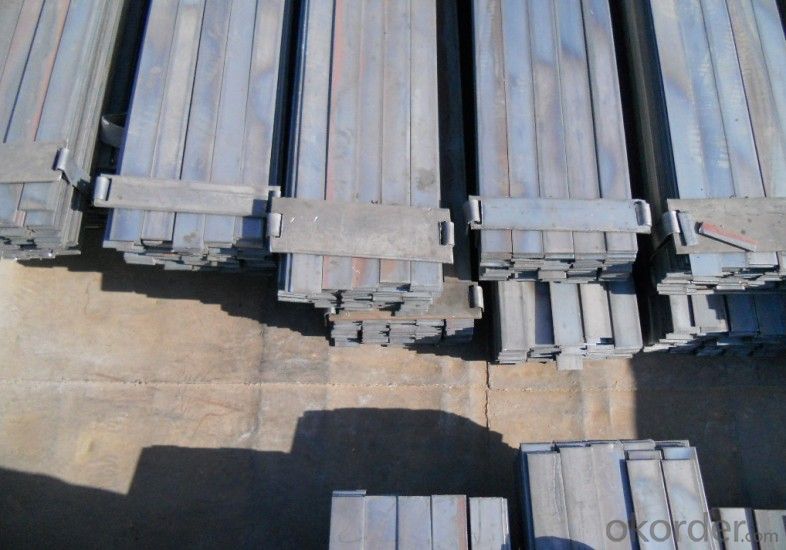
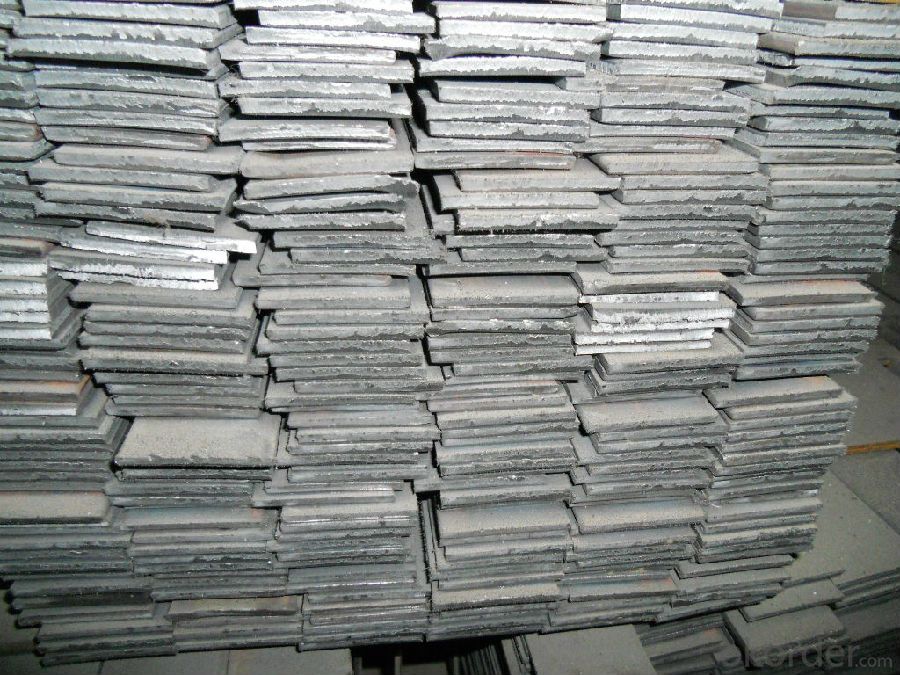
- Q: Are steel flat bars suitable for making cutting or scraping tools?
- Steel flat bars can indeed be suitable for making cutting or scraping tools, depending on the specific requirements and intended use. Steel is a strong and durable material, making it ideal for tools that require sharpness and longevity. Flat bars can be easily shaped and formed into various cutting or scraping tool designs, offering versatility and customization options. However, the choice of steel grade is crucial to ensure the desired performance. High carbon steel, for example, is known for its hardness and ability to hold a sharp edge, making it suitable for cutting tools like knives or chisels. On the other hand, stainless steel may be preferred for tools that require resistance to corrosion, such as scrapers used in wet or humid environments. Ultimately, the suitability of steel flat bars for making cutting or scraping tools depends on factors like the intended application, required hardness, and desired resistance to wear or corrosion.
- Q: What is the typical width tolerance for steel flat bars?
- The typical width tolerance for steel flat bars can vary depending on the specific manufacturing process and industry standards. However, in general, the width tolerance for steel flat bars is often specified within a range of +/- 0.005 to 0.020 inches. This means that the actual width of the bar can deviate by a small amount from the specified width. The specific tolerance will depend on factors such as the desired precision, intended application, and the standard followed by the manufacturer. It is important to consult the appropriate industry specifications or consult with the manufacturer to determine the exact width tolerance requirements for a specific steel flat bar.
- Q: Can steel flat bars be heat treated?
- Steel flat bars can indeed undergo heat treatment. Heat treatment is a useful technique for modifying the physical and mechanical properties of steel by subjecting it to specific heating and cooling cycles. It is a widely employed process for enhancing the hardness, strength, and toughness of steel flat bars. Depending on the desired results, heat treatment can be carried out through various methods, including annealing, normalizing, quenching, and tempering. Each of these methods involves heating the steel to a specific temperature and then carefully controlling the cooling rate. Heat treatment finds extensive application in industries such as manufacturing, construction, and automotive to improve the performance and durability of steel flat bars.
- Q: Can steel flat bars be used for construction projects?
- Steel flat bars are suitable for construction projects. They are highly versatile and widely utilized in the construction sector because of their durability and strength. These bars are commonly employed for various purposes, including supports, braces, frames, and structural components in buildings, bridges, and infrastructure projects. They offer dependable structural support and are renowned for their ability to bear heavy loads, making them an ideal choice for construction purposes. Furthermore, their consistent shape and size facilitate effortless handling, ensuring efficient installation and fabrication. In conclusion, steel flat bars are favored in the construction industry due to their durability, strength, and adaptability.
- Q: How do steel flat bars compare to carbon fiber flat bars?
- Steel flat bars and carbon fiber flat bars have distinct differences in terms of material properties and applications. Steel flat bars are known for their durability and strength, making them suitable for heavy-duty applications where high load-bearing capacity is required. They provide excellent resistance to impact, bending, and deformation, making them ideal for use in construction, manufacturing, and automotive industries. Steel flat bars are also more cost-effective than carbon fiber flat bars. On the other hand, carbon fiber flat bars offer exceptional strength-to-weight ratio and are much lighter than steel flat bars. This makes them advantageous in applications that prioritize weight reduction, such as aerospace, sports equipment, and automotive industries. Carbon fiber flat bars also exhibit excellent resistance to corrosion and fatigue, providing enhanced longevity compared to steel flat bars. In summary, steel flat bars are favored for their strength, durability, and cost-effectiveness, while carbon fiber flat bars excel in terms of lightweight design, high strength-to-weight ratio, and superior corrosion resistance. The choice between the two depends on specific requirements, intended application, and budget constraints.
- Q: Can steel flat bars be used for manufacturing tools or machinery?
- Manufacturing tools or machinery is indeed possible with steel flat bars. Steel, being a highly versatile and durable material, is apt for a wide array of applications. Due to their strength, rigidity, and capacity to withstand heavy loads and pressure, steel flat bars are commonly employed in the manufacturing industry. They can be easily shaped, welded, and machined to fabricate diverse components and parts for tools and machinery. Moreover, steel flat bars are renowned for their exceptional resistance to corrosion, a vital factor for ensuring the durability and dependability of tools and machinery. All in all, steel flat bars are a favored choice in the manufacturing industry, thanks to their reliability, versatility, and suitability for producing top-notch tools and machinery.
- Q: Can steel flat bars be heat-treated?
- Indeed, it is possible to subject steel flat bars to heat treatment. By undergoing controlled heating and cooling, this process effectively transforms the physical and at times chemical attributes of the steel. The objective behind heat treatment varies, encompassing the augmentation of hardness, the enhancement of strength, the fortification of toughness, and the customization of other mechanical properties to meet specific application requirements. Depending on the desired results, various heat treatment techniques such as annealing, normalizing, quenching, and tempering may be employed on steel flat bars.
- Q: Can steel flat bars be bent without breaking?
- Yes, steel flat bars can be bent without breaking. The ability of steel to be bent without breaking depends on various factors such as the thickness and grade of the steel, as well as the bending method used. Steel flat bars are commonly bent using techniques such as cold bending or hot bending. Cold bending, which involves bending the steel at room temperature, is usually suitable for thin and malleable steel bars. However, for thicker or harder steel bars, hot bending may be required. This involves heating the steel to a high temperature and then bending it while it is still hot. By carefully controlling the bending process and ensuring the steel does not exceed its elastic limit, it is possible to bend steel flat bars without causing them to break.
- Q: What is the maximum length-to-thickness ratio for a steel flat bar?
- The maximum length-to-thickness ratio for a steel flat bar depends on various factors such as the specific grade of steel, the intended application, and industry standards. However, as a general guideline, the maximum length-to-thickness ratio for a steel flat bar is typically around 150:1.
- Q: What is the maximum thickness-to-width ratio for steel flat bars?
- The maximum thickness-to-width ratio for steel flat bars can vary depending on the specific grade and type of steel being used. However, in general, the maximum thickness-to-width ratio for steel flat bars is typically around 1:10. This means that the thickness of the bar should not exceed 10 times its width. It is important to note that this ratio may vary based on the specific application and industry standards, so it is always advisable to consult relevant engineering codes and standards to determine the maximum thickness-to-width ratio for a specific steel flat bar.
Send your message to us
Hot Rolled Steel Flat Bars in Material Grade Q235B
- Loading Port:
- Tianjin
- Payment Terms:
- TT OR LC
- Min Order Qty:
- 25 m.t.
- Supply Capability:
- 10000 m.t./month
OKorder Service Pledge
OKorder Financial Service
Similar products
Hot products
Hot Searches
Related keywords
